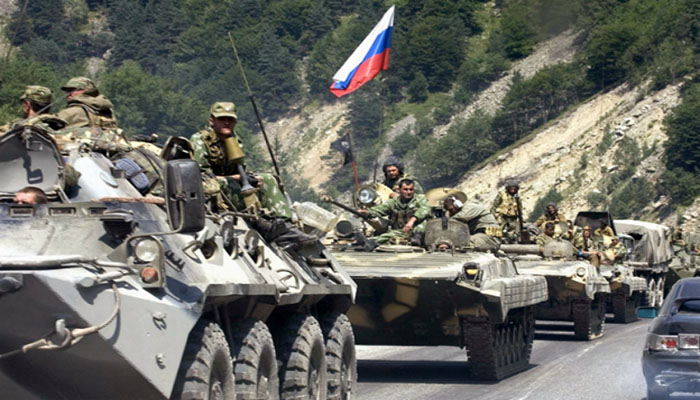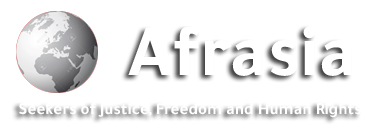
Afrasianet - The Russian presence in Syria was not a colonial or occupying presence, as is the case with the American, British or French presence in many parts of the world. Rather, this presence came at the request of an official government that is a member of the United Nations and the Arab League, which has its own independent decision. Starting in September 2015, Russia has strengthened its military presence in Syria, by deploying 21 Sukhoi-25 ground attack aircraft, 12 Sukhoi-24 interceptor fighters, and 6 Sukhoi Su-34 medium bombers. and 4 multi-role Sukhoi Su-30 plus 15 helicopters (including the Mi-24 Hind attack) at Bassel al-Assad International Airport near Latakia.
These aircraft protect at least two or three SA-22 air defense systems, and unmanned aircraft similar to the US MQ Predator are used to carry out reconnaissance flights. The Russian forces also included 6 T-90 tanks, 15 artillery pieces, 35 armored personnel carriers, and 200 Marines (with accommodation facilities for 1,500 personnel). BM-30 Smirch bombers were also spotted near Latakia.
On 30 September, President Vladimir Putin asked the Federation Council to allow the deployment of armed forces in Syria, the Council cut off the live broadcast of the discussion which turned into a closed session and unanimously granted the Russian President the authorization to use the armed forces abroad. Vladimir Putin stated, “First, we will only support the Syrian army in its legitimate struggle against terrorist organizations in particular...and secondly, this support will be from the air only, without participating in ground operations.”
The Russian president also pointed out that there are thousands of citizens of European countries, Russia and the former Soviet Union who have joined terrorist organizations, pointing out that one does not need to be an expert in security affairs to know that if they win in Syria, they will return to their country and return to Russia as well.
The Russian Defense Ministry has authorized the implementation of 20 airstrikes on 8 ISIS sites, on the Syrian mainland. The ministry spokesman stated that the strikes came after an aerial reconnaissance operation and information received by the Russian forces from the Syrian General Staff.
Russia has supported the internationally recognized government of Bashar al-Assad since the beginning of the Syrian conflict in 2011 politically and since December 30, 2015 also through direct military involvement;
The latter represented the first time since the end of the Cold War that Russia entered an armed conflict outside the borders of the former Soviet Union. Since October 2011, Russia, as a permanent member of the UN Security Council, has repeatedly vetoed Western-sponsored draft resolutions in the UN Security Council designed to demand the resignation of Syrian President Bashar al-Assad and open the possibility of UN sanctions against his government.
The Russian leadership rejects the demand promoted by Western countries and their Arab allies not to allow Bashar al-Assad to be a participant in the Syrian settlement. The Russian presence has stabilized the situation in Syria, especially in the east and south, so what about the American intervention?
The US military intervention in the Syrian conflict began on the ground since the beginning of March 2017 until now, after the US administration, under US President Donald Trump, decided to be more involved in the Syrian crisis, unlike the previous administration.
This had an impact that did not stop at the military dimensions and repercussions only. It had important political dimensions and repercussions, most notably the formulation of "new political influence maps."
First of all, the US military intervention in the Syrian conflict, as a matter of fighting ISIS, opened the way for a new course of relations between the United States and the international and regional powers involved in the Syrian conflict.
Washington's tendency to support the Syrian Kurds in the face of ISIS in the city of Manbij in preparation for Raqqa has been the main point of contention with Ankara, as the latter believes that the Syrian Kurdish militias are closely linked to the militias of the Turkish opposition Kurdistan Workers Party, which Turkey classifies as a terrorist organization.
In addition to Turkey’s total and detailed rejection of the idea of having Kurdish military forces, with this number and with such high military and armament capabilities, on its southern borders as a threat to its national security.
This is in contrast to the Syrian Kurdish aspirations regarding the establishment of an independent Kurdish entity in northern Syria, and the problems of the future of the Syrian Democratic Forces, once the fight against ISIS is completed.
But the fact that the American intervention went further than that indicates this by the positioning of the American forces that are positioned near the oil fields to steal and transport oil and to defend these fields.
The American strike against the Shayrat base was Washington's reassessment of its political and security calculations in Syria.
Therefore, it was driven by a set of goals. It also carried many connotations, the most important of which was Trump's desire to send messages to Iran, in contrast to his rejection of the nuclear agreement, which he believes gave Iran a growing influence in the region. He revealed the extent of the damage caused to the interests of the United States in the Middle East during the term of the former American president as a result of its withdrawal from the region in favor of Russia and Iran.
As for the second strike after the Shayrat base, which was against the movements of the militias of the Syrian regime in the border area of Al-Tanf, it made it clear that the United States’ role in eastern Syria would not be limited to fighting the “Islamic State” organization “ISIS” in Raqqa and Deir ez-Zor only, but extended to include obstructing the movements of Iran and undermining its influence in the same mentioned region. And consider those moves important targets for US military strategies there.
This is what Russia, which tried to rein in the repeated US military strikes against the allies of the Syrian regime, realized because of Moscow’s refusal to leave the eastern region of Syria open to US military movements, whether they were ground movements of the Syrian forces loyal to it, or successive air strikes, which indicates that in the absence of a conclusion A formula for understanding between the United States and Russia, and behind them the Syrian regime and Iran, to determine the places of influence and control between these powers.
The region may witness many scenarios. The talks that took place between the United States and Russia in Jordan regarding the Syrian southwest region, which ended with the inauguration of a truce in the aforementioned region, which took effect on the ninth of July 2017, were the first of their kind in which the new U.S. administration participated in direct talks with the Russian side regarding armistice agreements.
The Turkish position on the US military intervention in Syria There are some important variables through which one can find out the details of the Turkish position on the US military intervention in Syria, the first of which is the Turkish position on the liberation of Raqqa.
The second is the position of the Kurdish variable as an important determinant of Turkish foreign policy in general, and the developments of the Syrian file in particular.
The third is the effect of Turkey ending last March (2017) the military operation Euphrates Shield, which it had begun in northern Syria. And finally, the position on the American strike on Shayrat Airport, and the future of relations between the two countries in this regard. Iran's position on US military intervention It can be found by discussing the strategic challenges that Iran is facing in the region, especially after the arrival of the Trump administration, the Iranian position on the US military strike on Shayrat Airport, and finally Iran's position on the South Armistice Agreement. Russia's position on US intervention By discussing the Russian interactions in Manbij and Raqqa, then the Russian position on the American targeting of the Shayrat base, then the Russian position on the initiative to ease the conflict, and finally the Russian role in the armistice agreement in the south.
The American military intervention in the Syrian conflict did not contribute to resolving the American position towards the entire conflict, especially the relationship between the Syrian regime and the opposition, the future of the crisis and the nature of the hoped settlement, because it still lacks an integrated strategic vision on how to manage the Syrian conflict, and that the strategic, political options of this intervention The military ones, are still ambiguous.
But at the same time, it points to the reasons that may push Washington to raise the level of its military presence on Syrian soil as a necessary factor that will be imposed by the developments and repercussions of the stage of confrontation with ISIS and its aftermath, and the associated new formulation of coordination and security and political cooperation with other forces. It's all a question:
Will the Americans leave the spoils they earn from their presence near the oil fields? I think so. In summary, and with comparison, we can say that the Russian intervention was able to curb the impetus of the forces that contributed to creating chaos in Syria, especially the United States, which usually drags its allies into positions that they pay for later, regretting it too late.

